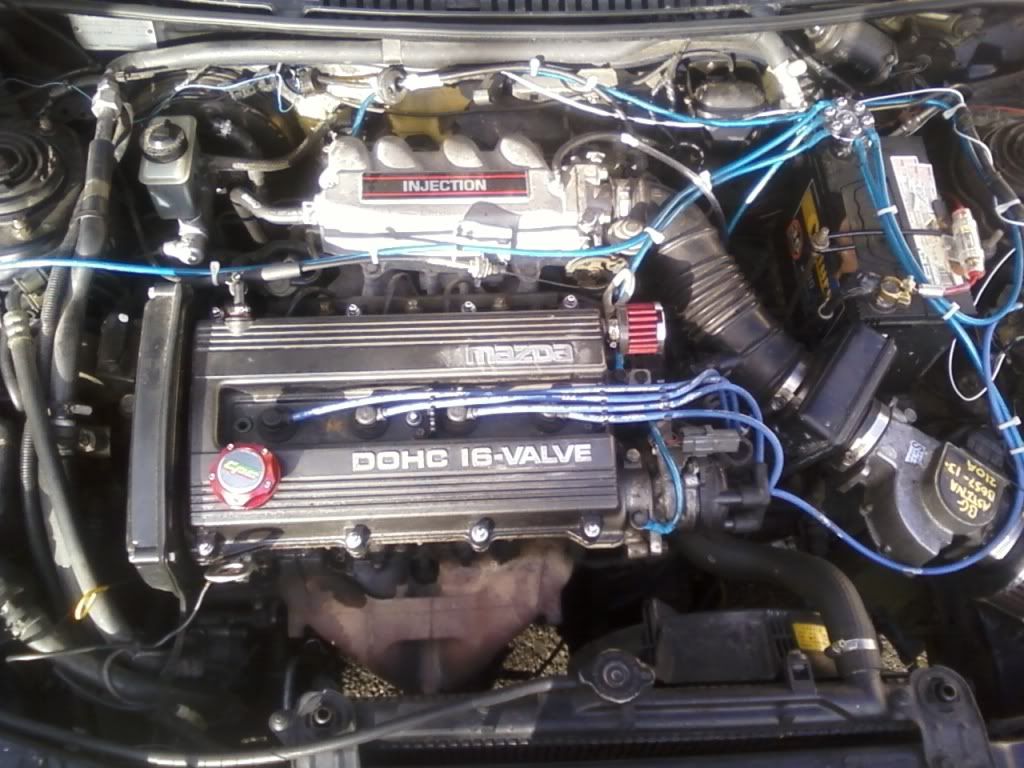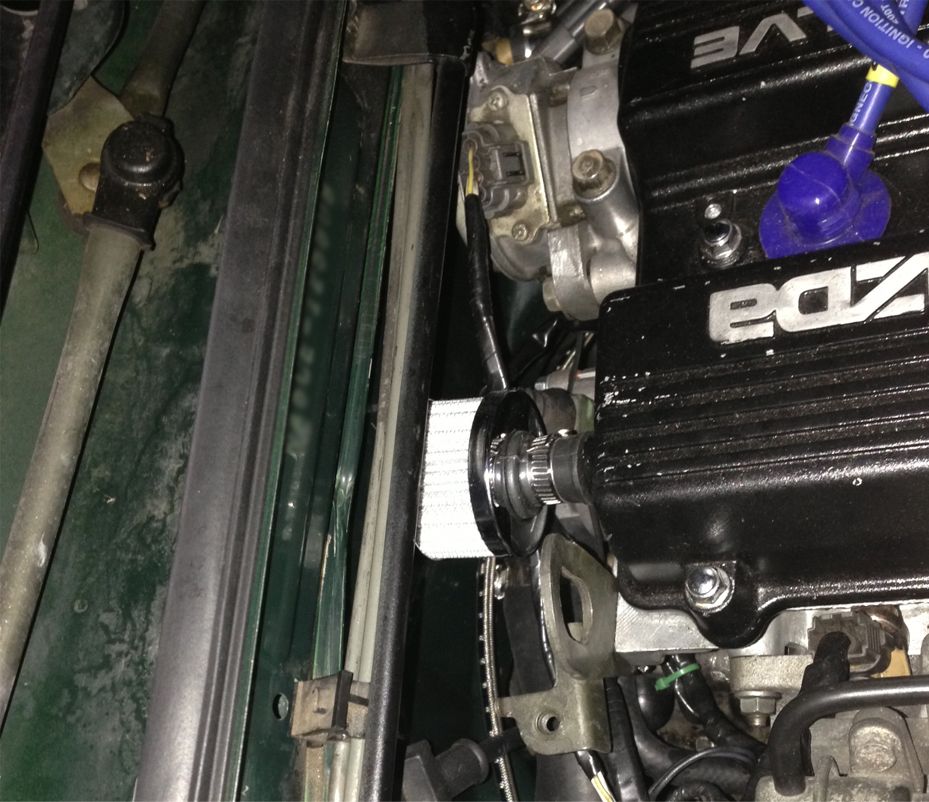It does react to high temperature swings pretty fast. While likely not millitary grade, its enough for me to see general indications as well as specific readings when i want. Mentioned earlier I have boiled and iced the chips, I also remember having fun with one i was prepared to sacrifice (had a ceremony, chants and like.. everyfink...)
Not having used a thermocouple for extended use i couldn't compare it to it's reaction time but from zero degrees on ice, to having a 270 deg soldering iron touch it, took well less then 15 seconds to reach well over it's max reading. I didnt document this and i'm almost certain it was less then 7 sec in recounting the moment, but for arguments sake lets say memory is fallible.
Being boiled then pressed into ice had a similar swing downward ramp in temp. (tho i didnt actually time that)
The sensors on my setup are literally IN the air flow. The inlet temp sensor is literally in the middle of the entrance to the cowling air pipe.
The throttle body air temp sensor is in the airflow approx 2" out from the edge of the throttle's metal lip. (I'm not having anything close to the throttle incase it dislodges and blocks closure of the throttle.
Changes in air temp on the front grill driving at night from hill crests to valleys, where the valleys i've felt a LOT cooler then the crests (roof down) reflected with nearly 10 degree drops from my arduino reading. Driving through these results in changes within a few seconds. The grill temp sensor is cable tied to the actual grill of my car, which is not a mesh type grill like many others, but an actual amount of horizontal metal bars (dare i say... aston martinesque?) oh god, i just said it..
The sensors dont have heat sinks on them, the metal of the TO220 package is angled and exposed to the air path as best i could handle that- which wasnt difficult. Without the heatsinks the package is able to react much faster to instantaneous temp changes. - a heatsink attached would almost mechanically 'average' the instant variances which would be better off for a domestic thermostat in a corridor with random air breezes.
I do understand your thoughts on latent heat absorbtion can come into play, but as the sensors react within seconds to swings in temps, i'd hazard a guess (as best as i'm not an engineer) that it's able to refresh itself relatively well.
btw, i'd love to have a skype session and yack about this in person - it'd save my rants on here and my fingertips in typing!


















